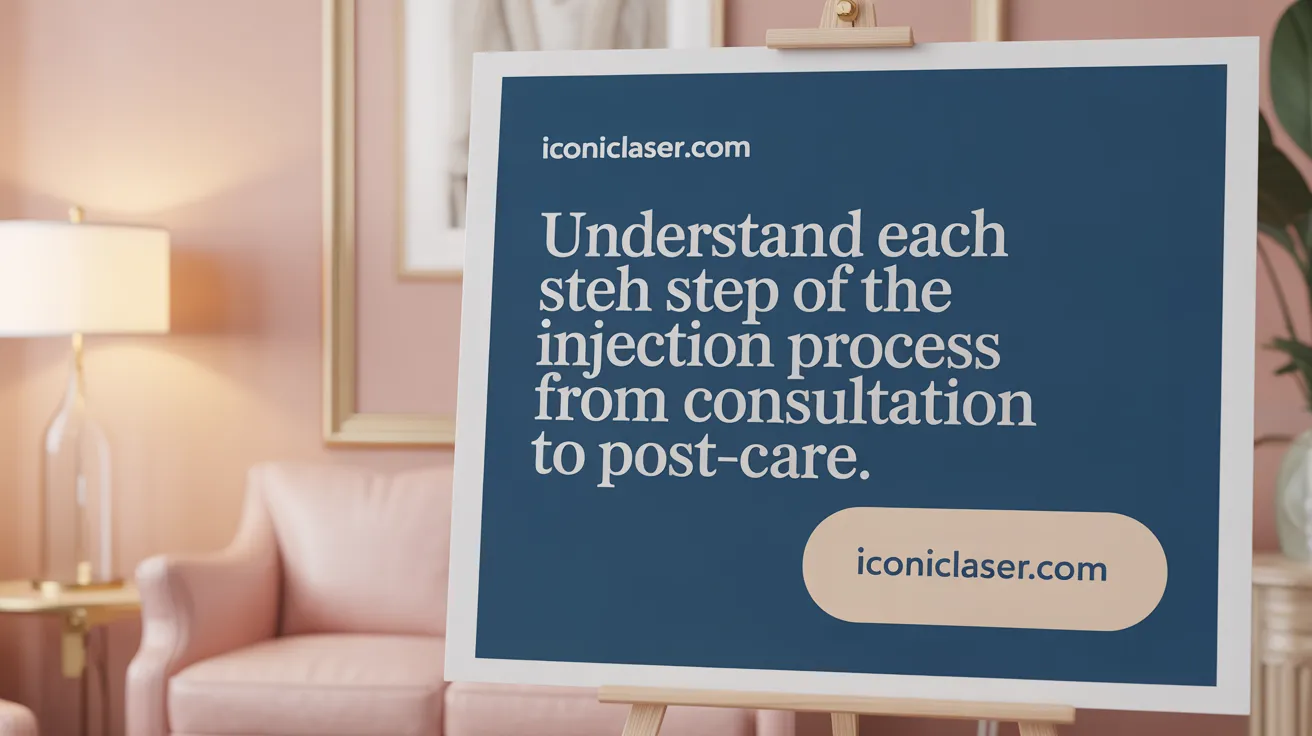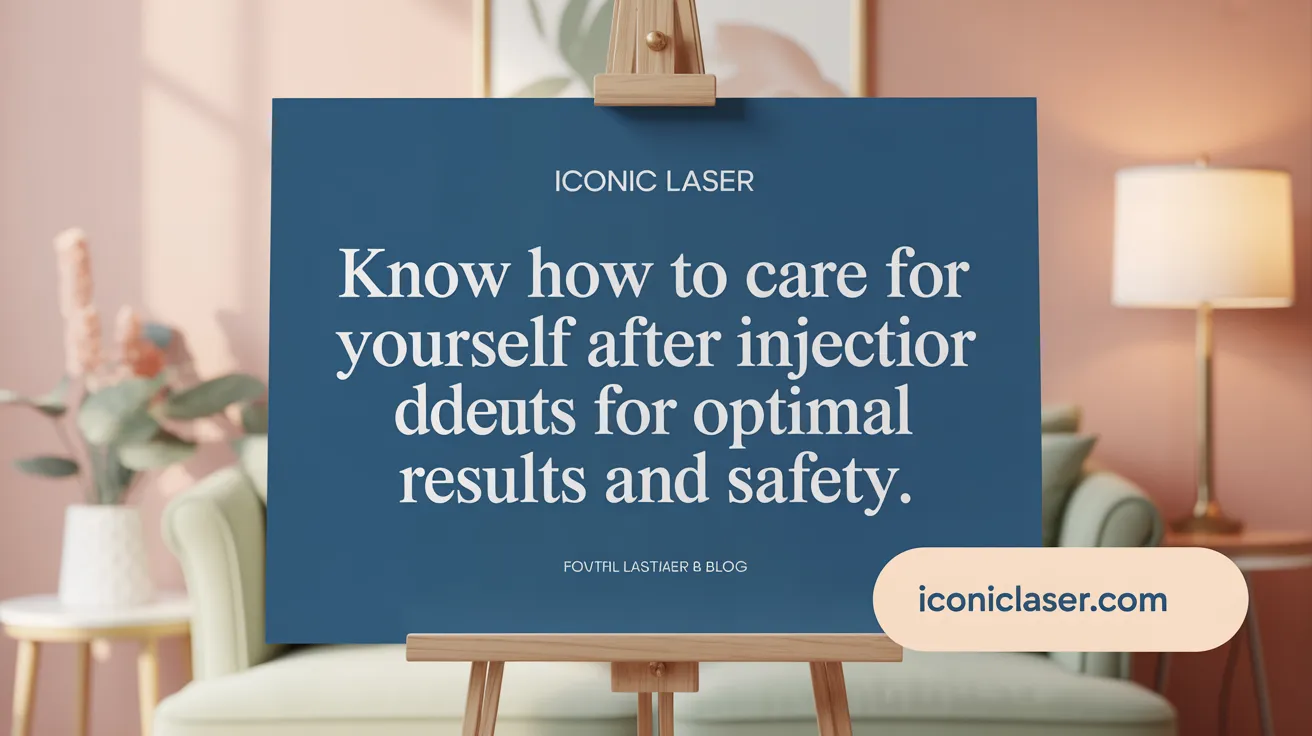What Are Injectable Treatments and Why Are They Popular?
Injectable treatments have surged in popularity as minimally invasive cosmetic solutions for enhancing facial aesthetics and addressing signs of aging. Comprising neurotoxins and dermal fillers, these procedures offer quick, effective results with minimal downtime. This article demystifies injectable treatments by explaining their types, mechanisms, procedures, expectations, safety considerations, and benefits, helping readers make informed decisions about their aesthetic journey.
Overview of Injectable Treatments: Types and Their Purposes

What are injectable treatments and what is their purpose?
Injectable treatments are minimally invasive cosmetic injections that involve injecting various substances into the skin to improve appearance and address specific concerns. They include dermal fillers, which add volume, smooth wrinkles, and enhance facial features such as lips and cheeks, and botulinum toxin injectables(like Botox), which relax overactive muscles to reduce dynamic wrinkles. Other injectables, such as Kybella, are used to dissolve excess fat, while PRP and fat injections promote tissue rejuvenation and volume restoration. These treatments are typically quick, with minimal recovery time, and provide immediate or gradual yet noticeable results. They are used for purposes such as reducing signs of aging, enhancing facial contours, treating excessive sweating, and correcting skin imperfections.
What are the different types of injectable treatments?
The main types of injectable treatments include dermal fillers and neurotoxins. Dermal fillers, such as hyaluronic acid-based products like Restylane and JUVÉDERM®, are used to restore volume, smooth wrinkles, and contour facial features, with effects lasting from several months to over a year or more. Neurotoxins like Botox, Dysport®, and Jeuveau are derived from botulinum toxin and work by temporarily relaxing muscles to reduce dynamic wrinkles, with results typically lasting 3 to 6 months. Other specialized injectables include Sculptra, which stimulates collagen production and offers longer-lasting results, and Kybella, used to reduce submental fat permanently through deoxycholic acid injections. Additionally, treatments like PRP therapy and fat grafting are available for facial rejuvenation and volumization, targeting different aesthetic concerns.
How Injectable Treatments Work: Mechanisms and Effects

How do injectable treatments work and what are their mechanisms of action?
Injectable cosmetic treatments primarily operate through three biological mechanisms: volume restoration, muscle relaxation, and collagen stimulation.
Dermal fillers, such as hyaluronic acid-based products like Juvéderm and Restylane, restore facial support by attracting water molecules, thereby adding volume and smoothing out wrinkles and lines. Their immediate effect is visible as the skin appears fuller and more youthful. bio-stimulatory fillers, including Poly-L-lactic acid (Sculptra) and calcium hydroxylapatite (Radiesse), go a step further by stimulating the body's natural collagen production. This process involves a gradual increase in skin firmness and elasticity over several weeks, enhancing the long-term anti-aging effect.
The physical and chemical properties of these fillers, like particle size, crosslinking density, and rheology (notably the G′ or G-prime value), significantly impact their behavior. Higher G′ fillers are firmer and better suited for contouring and deeper injections, lasting longer and maintaining shape under stress. Lower G′ fillers are softer and ideal for superficial lines and lip augmentation. For detailed information about the physicochemical properties, see Physicochemical and biological characterization of injectable fillers.
Neurotoxins, such as botulinum toxin, work differently. They block the nerve signals responsible for activating muscle contractions by inhibiting the release of acetylcholine at the neuromuscular junction. This paralysis of targeted muscles reduces dynamic wrinkles caused by repetitive muscle movements, providing a smoothing effect that develops over a few days and lasts typically between 3 to 6 months. Learn more about Botulinum toxin type A and neurotoxins.
Together, these treatments address various signs of aging by either adding content, relaxing muscles, or encouraging the body's natural regenerative processes. For a comprehensive overview of injectable treatments, see Injectable treatments overview.
Variations in filler composition and their impact
Different filler materials and formulations influence their performance and longevity. Hyaluronic acid fillers are adjustable in their crosslinking, affecting water retention capacity and duration—more crosslinking generally means longer-lasting results. Poly-L-lactic acid stimulates collagen but is absorbable, with results improving over several months and lasting over two years. Calcium hydroxylapatite, being thicker, provides more enduring support—about 12 months—and also fosters collagen creation.
Permanent options like polymethylmethacrylate (PMMA) microspheres contain tiny, biocompatible beads that provide semi-permanent or long-term support by maintaining volume over years, but they carry a higher risk of adverse reactions and complications. For safety and risks related to dermal fillers, consult Risks associated with injectable fillers.
The choice of filler depends on the specific treatment area, desired duration, and aesthetic goals. Skilled practitioners select the appropriate material based on these factors to ensure natural, safe, and enduring results. More about choosing a qualified provider can be found at Dermal fillers guide.
Biological responses such as collagen stimulation
Many injectable treatments are designed not only for immediate volumization but also to trigger biological responses, especially collagen synthesis. Bio-stimulatory fillers like PLLA and PCL induce a foreign body response, prompting fibroblasts to produce new collagen fibers, which reinforce the skin’s structural integrity over time.
This collagen induction is beneficial for addressing deeper wrinkles, skin laxity, and volume loss. Over months, the skin’s texture improves, offering a natural rejuvenation effect that complements the initial filler volume. This biological response is central to long-lasting aesthetic outcomes and is a significant advantage of certain injectable products. For a scientific perspective, see Collagen stimulation by injectable fillers.
In summary, injectables work by combining physical support with biological stimulation, enhancing both immediate appearance and skin health over the long term. Their efficacy relies heavily on the material composition, placement technique, and body's biological response. For an introduction to injections with detailed expectations and care, see What to expect when getting injectables.
The Procedure: What Happens During Injectable Treatment Sessions

Consultation and Medical History Review
Before any treatment, a detailed consultation for injectables is conducted. The healthcare provider discusses the patient’s aesthetic goals, reviews medical history and injectables, current medications, and past cosmetic procedures. This step ensures that the patient is a suitable candidate and helps the provider plan the most effective approach.
Treatment Preparation Steps and Techniques
Preparation begins with cleansing the targeted area thoroughly with alcohol-based antiseptics. The provider may apply a topical numbing cream or ice to reduce discomfort during the injections. Proper site marking guides the precise placement of injections. The choice of injection method and pain management techniques, such as linear threading, fanning, or bolus, depends on the specific treatment goals and facial anatomy. Using sterile, single-use needles and syringes, the practitioner carefully injects the product at the correct depth and angle, employing techniques to minimize pain and optimize results.
Injection Methods and Duration
The treatment session mainly involves small, controlled injections. For dermal fillers, the goal is to restore volume or smooth lines, while neuromodulators like Botox for dynamic wrinkles aim to relax muscles. The process typically lasts between 15 to 30 minutes, although it may be shorter or longer based on the areas treated and the number of injections required.
Patient Sensations During Treatment
Patients may feel a slight pinching, stinging, or pressure at the injection site. Many injectables contain local anesthetic (such as lidocaine) to help numb the area, reducing discomfort. Some patients might experience brief sensations of warmth or twitching during the procedure. Post-injection, mild redness, swelling, or bruising may occur, but these effects are temporary and usually resolve within a few days.
Overall, the process is quick and minimally invasive cosmetic injections, designed to maximize comfort and safety while delivering natural-looking results.
Preparing for Injectable Treatments: Guidelines and Precautions
 Before receiving injectable treatments overview, proper preparation is essential to ensure safe procedures and optimal outcomes. Patients should come to their appointment with a clean, makeup-free face to minimize infection risks and facilitate the treatment process. Avoiding active skincare ingredients, such as retinoids, AHAs, and BHAs, for 3 to 5 days prior helps reduce skin sensitivity.
Before receiving injectable treatments overview, proper preparation is essential to ensure safe procedures and optimal outcomes. Patients should come to their appointment with a clean, makeup-free face to minimize infection risks and facilitate the treatment process. Avoiding active skincare ingredients, such as retinoids, AHAs, and BHAs, for 3 to 5 days prior helps reduce skin sensitivity.
One of the most important steps is to discontinue blood-thinning medications and supplements like fish oil, vitamin E, garlic, ginseng, and ginkgo biloba at least 5 to 7 days before treatment. These substances can increase the risk of bruising and bleeding during and after the procedure.
Limiting alcohol intake 48 hours before the treatment also helps reduce the likelihood of bruising and swelling. Patients are advised to avoid strenuous exercise on the day of the appointment to prevent unnecessary blood flow to the face.
Effective communication with your provider is crucial. Be sure to share your complete medical history, including allergies, previous reactions to treatments, and any underlying health conditions. This information helps your healthcare professional tailor the treatment plan safely.
Scheduling your treatment at least four weeks ahead of any special events offers enough time for healing and for addressing any unexpected side effects. Following these guidelines can lead to a smoother experience and more natural, satisfying results from your injectable cosmetic procedures.
For further details, searching
Post-Treatment Care and Managing Side Effects

What post-treatment care and recovery guidelines should be followed after injectable treatments?
After receiving injectable treatments such as dermal fillers or Botox, patients should adhere to specific post-treatment care practices to reduce side effects and enhance results. It is recommended to avoid strenuous activities, heat exposure (like saunas or tanning beds), and touching or massaging the treated area for at least 24 hours. Applying cold packs or ice during the first 12 hours can help decrease swelling and bruising. Staying well-hydrated, sleeping with the head elevated, and avoiding alcohol, NSAIDs, and blood-thinning supplements like aspirin or vitamin E for several days before and after treatment can further minimize bruising risks. Patients should also refrain from applying makeup, scheduling facial or dental procedures, or undergoing other skin treatments within 24 to 48 hours of injections. Monitoring the treated areas and following any specific instructions from the healthcare provider, such as the use of medications or activity restrictions, are crucial. If symptoms such as severe pain, discoloration, or excessive swelling develop, prompt medical attention should be sought.
Typical side effects and how to address them
Common side effects include mild swelling, bruising, redness, tenderness, and temporary discomfort. These usually resolve within a few days to a week. Bruising can be minimized by avoiding blood thinners and by using ice or arnica-based topical remedies. Swelling and redness can often be reduced with cold compresses, and over-the-counter pain relievers like acetaminophen may alleviate discomfort. Rare but more serious issues, such as signs of infection or vascular compromise (like skin discoloration or severe pain), require immediate medical intervention. The use of hyaluronidase can dissolve hyaluronic acid fillers in case of vascular occlusion or adverse reactions.
When to seek medical attention
Patients should seek urgent medical care if they notice signs of severe reactions such as sudden pain, blistering, discoloration, or skin necrosis. Symptoms like vision changes, difficulty breathing, or severe swelling indicate an emergency. Visible or palpable lumps, persistent pain, or allergic symptoms such as swelling of the lips, throat, or face also warrant prompt evaluation. Early intervention with appropriate treatments, including administration of hyaluronidase for hyaluronic acid fillers or antibiotics for infections, can prevent complications and ensure patient safety. Overall, informed observation and swift response are vital to managing side effects effectively.
Choosing Treatments and Expected Outcomes
What outcomes and benefits can patients expect from various injectable treatments?
Patients can anticipate a variety of positive effects from different injectable procedures. Commonly, these treatments smooth out wrinkles, lines, and creases, resulting in a more youthful and refreshed appearance. For example, hyaluronic acid fillers add volume, hydrate the skin, and stimulate collagen production, which enhances skin elasticity and overall texture. Neurotoxins like Botox relax facial muscles temporarily, reducing dynamic wrinkles caused by expressions. These effects typically last from several months up to a few years, depending on the specific product and individual metabolic factors, with ongoing treatments needed for maintenance.
In addition to aesthetic improvements, some injectables address medical conditions—Botox and similar neurotoxins can treat migraines, excessive sweating, and muscle spasms. Treatment outcomes also include improved facial harmony and confidence, with minimal downtime and risk. Properly administered by trained professionals, injectables offer safe, predictable, and natural-looking results, making them a popular choice for those seeking subtle or significant facial rejuvenation. For more details, see Injectable treatments overview.
What options are available for common aesthetic injectable treatments and their applications?
The main types of aesthetic injectables include botulinum toxins and a wide range of dermal fillers. Botulinum toxins, such as Botox, Dysport, and Jeuveau, are used primarily to relax muscles and soften dynamic wrinkles—typically on the forehead, between the eyebrows, and around the eyes—with effects lasting about 3 to 6 months.
Dermal fillers, especially those based on hyaluronic acid like Restylane and Juvederm, are versatile. They restore lost volume, fill facial creases, and contour features such as lips, cheeks, and jawlines. Results generally last 6 to 18 months. Collagen-stimulating agents like Sculptra and Poly-L-lactic acid promote the body’s natural collagen production, providing longer-lasting, gradual rejuvenation over 1 to 2 years.
Other injectable options include deoxycholic acid to reduce submental fat, platelet-rich plasma (PRP) for skin and scalp rejuvenation, and sclerotherapy for vein treatment. The selection depends on individual goals, facial structure, and medical suitability, with professional guidance ensuring safe and effective outcomes.
How are treatment options selected, and who are suitable candidates for injectable treatments?
Choosing the appropriate injectable treatment hinges on a comprehensive assessment of each patient’s facial anatomy, aesthetic objectives, and medical history. Candidates are generally healthy individuals desiring non-surgical facial enhancements and who have realistic expectations.
A qualified practitioner—preferably a board-certified dermatologist, plastic surgeon, or licensed cosmetic specialist—conducts an initial consultation to evaluate facial features, discuss goals, and recommend tailored procedures. Proper selection involves considering factors like skin type, areas of concern, desired longevity, and potential risks.
Candidates should be committed to follow-up treatments, as most injectables are temporary. Those with active skin infections, allergies to certain substances, blood clotting disorders, or unrealistic expectations may not be ideal candidates. Ensuring the provider’s experience and proper technique minimizes complications and helps achieve natural, satisfying results.
What are the long-term safety considerations and potential adverse effects associated with injectable treatments?
Long-term safety of injectables depends on the type of product used and the skill of the practitioner. Hyaluronic acid fillers are generally safe, with low probabilities of adverse effects; however, rare long-term reactions such as granulomas, persistent swelling, or immune-mediated responses can occur, especially if residual proteins or improper cross-linking are involved.
Permanent fillers like liquid silicone and polymethylmethacrylate carry higher risks of long-lasting complications, including nodules, granulomas, or tissue irregularities, which may require difficult removal procedures.
Neurotoxins like Botox and Dysport have a strong safety record when administered correctly, with rare effects like muscle weakness or eyelid drooping. Long-term, repeated treatments do not generally cause muscle atrophy beyond expected temporary effects.
Overall, the key to patient safety over time involves choosing experienced providers, employing proper technique, utilizing approved products, and continuous monitoring for any signs of adverse reactions. Educating patients about realistic outcomes and potential risks ensures informed decision-making and optimal long-term satisfaction. For more on risks and management, see adverse effects of dermal filler treatments and risks and side effects of cosmetic injectables.
Making Informed Choices for Injectable Treatments
Injectable treatments offer a versatile, minimally invasive approach to facial rejuvenation, wrinkle reduction, and contour enhancement, appealing to many seeking aesthetic improvements without surgery. Understanding the types of injectables, how they work, the procedure involved, preparation, aftercare, and potential risks empowers patients to make well-informed decisions. Selecting experienced, board-certified providers and following recommended guidelines optimizes safety and outcomes. While effects are generally temporary, regular maintenance can sustain youthful, refreshed appearances. With careful planning and expert care, injectable treatments can enhance confidence and provide natural-looking results tailored to individual goals.
